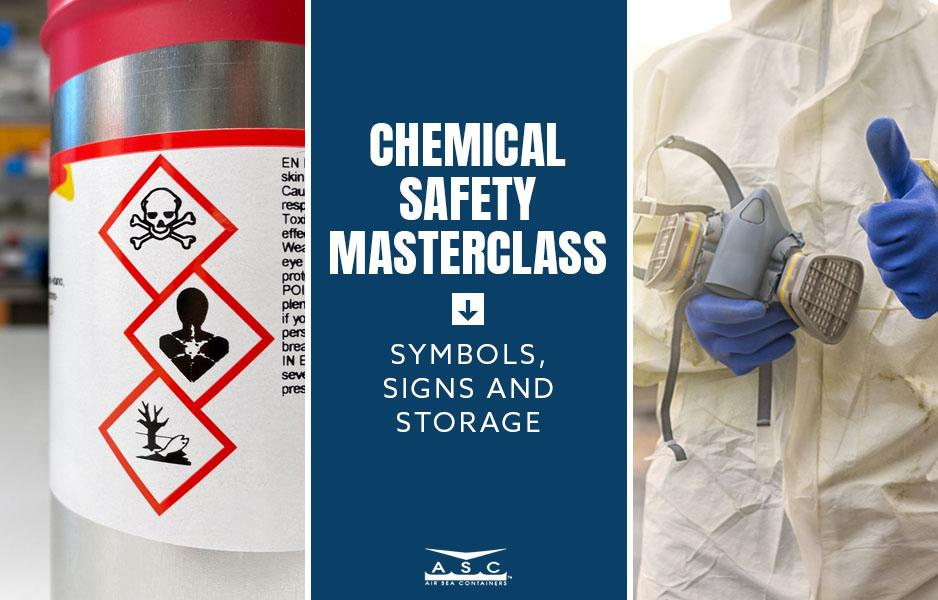Source: Gorodenkoff / Shutterstock.com
Summary:
- OSHA provides guidelines on how to contain hazardous material spills.
- OSHA requires facilities to have a containment program, fully trained staff and an emergency response plan.
- To minimize the risk of a major health hazard, businesses should invest in spill containment equipment from Air Sea Containers.
The United States Occupational Safety and Health Administration (OSHA) is a regulatory agency that directs compliance initiatives to help businesses maintain safe working environments. Its primary concern is to protect workers and reduce the number of work-related injuries, illnesses and fatalities. OSHA publishes compliance guidelines for the public and private sectors in a range of industries.
Spill containment is an important safety concern for businesses that handle hazardous materials like chemicals, acids, flammable liquids and oils. Without the proper equipment and procedures, a workplace accident could expose employees to harmful substances, causing injury or health issues. If your facility handles or distributes hazardous materials, you should have a secondary containment strategy that aligns with OSHA spill containment requirements.
OSHA Spill Containment Compliance Guidelines
OSHA outlines specific compliance guidelines relating to the storage and transportation of hazardous materials through its 1910.120 App C publication. This document outlines three key areas of focus for businesses: establishing a spill containment program, providing sufficient training and implementing a decontamination and response plan if an accident occurs.
OSHA representatives can carry out unannounced inspections, ensuring facilities are compliant with guidelines. In many cases, minor violations can be corrected immediately. However, more severe breaches can result in fines of up to $14,502 per infraction.
Prevent Safety Hazards from Leaks with a Drum Spill Pallet
Spill containment program
OSHA’s first requirement is that the facility should have a hazardous material and spill containment program. While the official article doesn’t mention products specifically, OSHA requires hazardous material storage containers to meet minimum EPA and OSHA safety standards.
The containers must be capable of storing hazardous materials safely, minimizing the risk of contamination, leakages, combustion or other potentially harmful reactions.
The main issues a spill containment program should cover include:
- Identification of hazardous materials and how they could harm employees and the environment
- Communication of all hazards to relevant staff and responsible personnel
- Means of identifying and controlling spills
- Cleanup responsibilities
- Waste disposal plan
- Strategy to monitor the program’s effectiveness
Source: Blue Planet Studio / Shutterstock.com
Spill containment training
OSHA requires that all staff who interact with hazardous materials have sufficient training to respond to an emergency spill. While the specific training needs depend on the industry and nature of the materials, employees should be instructed on the following:
- Potential hazards to expect if a spill occurs
- Effective control and containment methods for potential hazards
- How to monitor and gauge exposure levels
- Effective actions to protect their health and safety during a response
Workers should also receive the necessary hands-on training for equipment or clothing they are required to use when attending to a spill. This includes cleanup tools as well as personal protective equipment (PPE).
Spill decontamination and response
According to OSHA requirements, businesses must have decontamination and response procedures adapted to specific facility hazards. The complexity of the decontamination and response strategy depends on the nature of the hazard and the potential for exposure.
For example, a major spill of a flammable liquid may require an evacuation of the facility with no attempt to clean up. A minor spill may involve a multi-step process where responders wear specific PPE and tend to the material using appropriate cleaning equipment.
Use a Spill Containment Pallet to Safely Store Hazardous Materials On-Site
Spill Containment Equipment
A comprehensive spill containment plan can reduce the risk of a major disaster. However, it can’t prevent accidents from happening entirely. Air Sea Containers provides a range of spill containment equipment that can help keep your facility and employees safe even if a spill occurs.
A spill containment pallet is specially designed to hold drums and containers filled with hazardous substances. The pallet has a built-in containment sump to capture liquids that leak or spill from the containers.
We stock a variety of containment pallets manufactured to withstand harsh materials, including acids, caustics and solvents. You can choose from a selection of capacities, with some pallets capable of capturing up to 55 gallons (a full drum).
Our spill containment inventory list contains multiple products, whether you need a galvanized steel unit or an EcoPoly drum spill pallet. We also supply spill containment dollies for transporting materials and entire racking systems for steel drum storage.
Source: S1001 / Shutterstock.com
Maintain OSHA Compliance with Air Sea Containers
Having a reliable packaging and storage partner is essential for maintaining a safe facility. Air Sea Containers is a leading provider of certified and tested packaging equipment. We stock high-quality materials, helping your business remain OSHA compliant.










